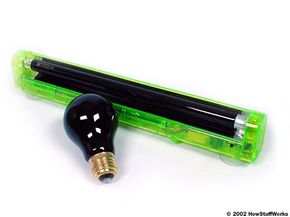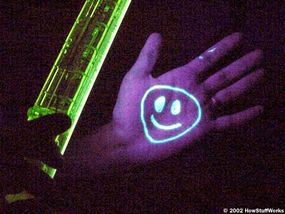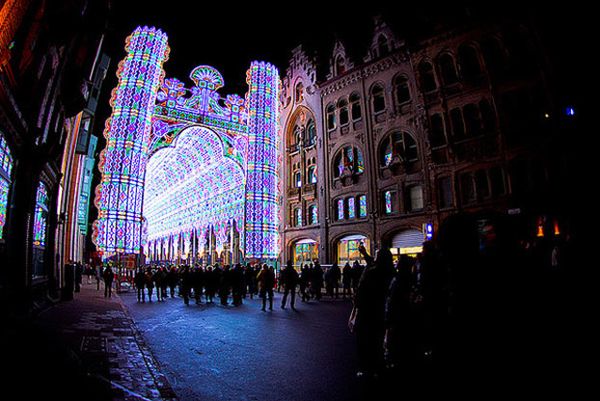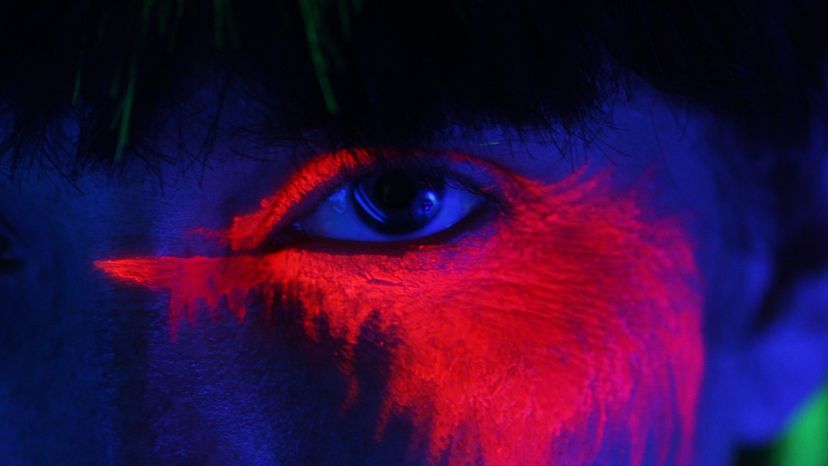
You have probably seen black lights at amusement parks, science museums and Halloween displays. Black lights may look just like normal fluorescent lamps or incandescent light bulbs, but they do something completely different. Switch one on, and white clothes, teeth and various other things glow in the dark.
Advertisement
For example, if you have a fluorescent poster and shine a black light on it in a dark room, the poster will glow brightly. You may have also seen pieces of paper that look blank in regular light but spell out a glowing message under a black light. Many amusement parks use hand stamps that are invisible until you view them under black light.
In this article, we'll find out exactly what's going on here. We'll also see why black lights make some objects glow but not others, and we'll look at some interesting black light applications.
What Is "Black Light"?
If you turn on a black light bulb in a dark room, what you can see from the bulb is a purplish glow. What you cannot see is the ultraviolet light that the bulb is also producing.
Our eyes can see visible light in a spectrum ranging from red through orange, yellow, green, blue and violet. Above violet is ultraviolet light, which we cannot see. How Sunburns and Sun Tans Work discusses ultraviolet light and its effects on our skin. A black light bulb produces UVA light (as opposed to UVB light, which is much more harmful).
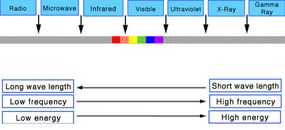
What you see glowing under a black light, whether on a fluorescent poster or an invisible hand stamp or a newly washed white T-shirt, are phosphors.
A phosphor is any substance that emits visible light in response to some sort of radiation. A phosphor converts the energy in the UV radiation from a black light into visible light.
In the next section, we'll see how phosphors are used in regular fluorescent lighting and in black lights.
Advertisement
